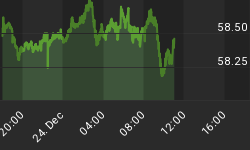Last we talked on Agri-Food part of our discussion was drought in Russia and wetness in Canada. Mother Nature just does not understand that just in time inventory management requires the weather to be properly scheduled. Or, perhaps humans should come to understand that just in time inventory is fine for electronic connectors, but does not work with wheat or corn or soybeans or any of the other Agri-Foods. While many things are made in factories, Agri-Foods are not. The lost portion of the Russian wheat harvest will not be replaced till 2011.
By the way, condition of Russian wheat harvest has worsened. Per bloomberg.com, 29 July,
"Russian wheat exports may fall by almost half in the current agricultural year because of a drought and a local shortage of the grain, the Institute for Agricultural Market Studies said. Outbound shipments may decline to 9.5 million metric tons from last year's 18 million tons, ... 'Russia won't export wheat from state stockpiles, as domestic flour millers and livestock farmers are facing a shortage,'..." [Emphasis added.]

When we visited last, wheat just breaking out of the bear trend, black arrow in graph, in which it had been trapped. It has moved further since then. Most recently, it took out the last intermediate high. Wheat prices at this point in time are uncapped. A move above US$7 per bushel is possible. Pressures from these higher wheat prices are being felt in other grains. If less wheat is available at a reasonable price, buyers will be forced to utilize other grains.
While wheat prices are just now moving up, other Agri-Food prices have already risen. Butter recently reached US$1.88 per pound, a price above the high in 2008. Cotton price is almost US$0.82 per pound, a price not seen in years. As a consequence of higher demand for world Agri-Food production brought about by rising incomes in China and India, we have a new picture for Agri-Food prices. This rising trend for Agri-Food prices can be observed in the following graph.

Our Agri-Food Price Index has risen to a new cycle high. It is only about 6% below the 2008 high. One would have been better off investing in a stick of butter or cotton balls rather than investing in the S&P 500. Over the past few years as Agri-Food prices have been moving higher technology companies have been continuously lowering the prices of their products. Good reason exists for that. Butter and cotton cannot be made in a factory.
Upward pressure on prices is in part due to the list of Agri-Food commodities of which China is a net importer continuing to expand. Corn and beef have recently been added to that list. Chinese firm just bought an Iowa hog-technology company. The technology play of the decade is Agri-Technology, not cheap electronic book readers. The world can live without Kindles, but not without soybeans. The "China put" may now have been created in Agri-Foods, and that may have effectively raised the floor for Agri-Food investments, be they stocks or Iowa farm land.
The current Agri-Food cycle has a decade to run, giving investors sufficient time to enhance their wealth. Two publications can help investors on the road to Agri-Food prosperity. They are The Joy of Agri-Food Price Inelasticity and 2nd Agri-Food Commodities: An Investment Alternative July 2010. Both are available at our web site free of charge or bother.
AGRI-FOOD THOUGHTS is from Ned W. Schmidt,CFA,CEBS, publisher of The Agri-Food Value View, a monthly exploration of the Agri-Food grand cycle being created by China, India, and Eco-energy. To contract Ned or to learn more, use this link: www.agrifoodvalueview.com
















